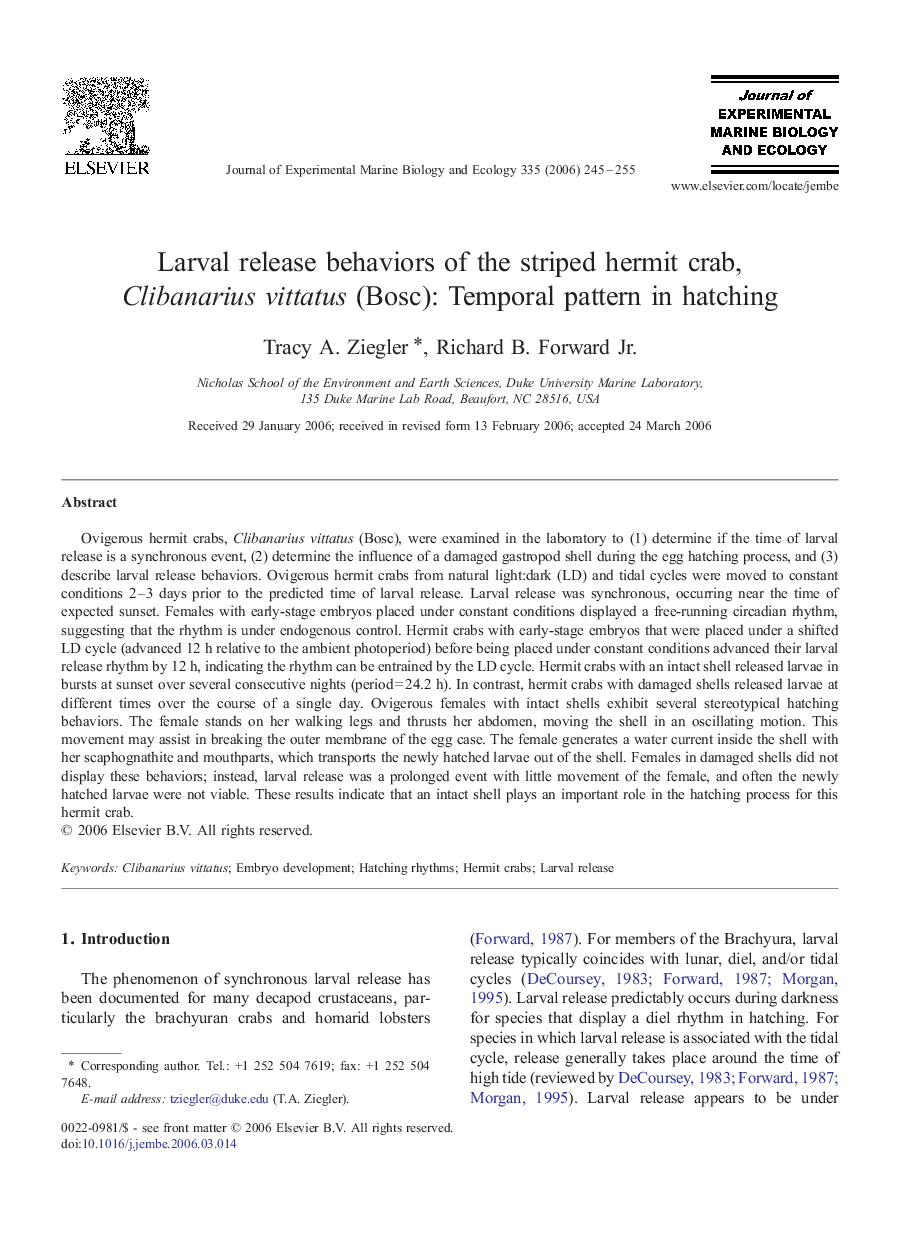| کد مقاله | کد نشریه | سال انتشار | مقاله انگلیسی | نسخه تمام متن |
|---|---|---|---|---|
| 4398099 | 1305925 | 2006 | 11 صفحه PDF | دانلود رایگان |

Ovigerous hermit crabs, Clibanarius vittatus (Bosc), were examined in the laboratory to (1) determine if the time of larval release is a synchronous event, (2) determine the influence of a damaged gastropod shell during the egg hatching process, and (3) describe larval release behaviors. Ovigerous hermit crabs from natural light:dark (LD) and tidal cycles were moved to constant conditions 2–3 days prior to the predicted time of larval release. Larval release was synchronous, occurring near the time of expected sunset. Females with early-stage embryos placed under constant conditions displayed a free-running circadian rhythm, suggesting that the rhythm is under endogenous control. Hermit crabs with early-stage embryos that were placed under a shifted LD cycle (advanced 12 h relative to the ambient photoperiod) before being placed under constant conditions advanced their larval release rhythm by 12 h, indicating the rhythm can be entrained by the LD cycle. Hermit crabs with an intact shell released larvae in bursts at sunset over several consecutive nights (period = 24.2 h). In contrast, hermit crabs with damaged shells released larvae at different times over the course of a single day. Ovigerous females with intact shells exhibit several stereotypical hatching behaviors. The female stands on her walking legs and thrusts her abdomen, moving the shell in an oscillating motion. This movement may assist in breaking the outer membrane of the egg case. The female generates a water current inside the shell with her scaphognathite and mouthparts, which transports the newly hatched larvae out of the shell. Females in damaged shells did not display these behaviors; instead, larval release was a prolonged event with little movement of the female, and often the newly hatched larvae were not viable. These results indicate that an intact shell plays an important role in the hatching process for this hermit crab.
Journal: Journal of Experimental Marine Biology and Ecology - Volume 335, Issue 2, 8 August 2006, Pages 245–255